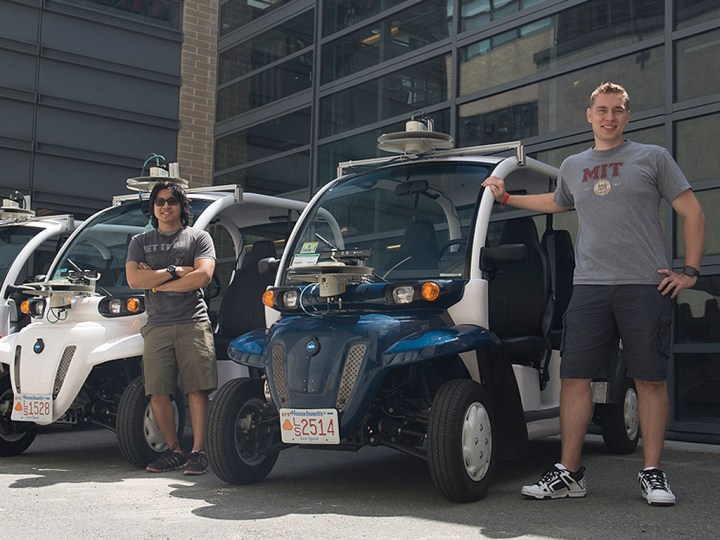
Starting this September, a select group of faculty and students will be able to hail one of three sidewalk-friendly, electric-powered, weather-protected, on-demand shuttles on MIT’s Cambridge campus and nearby city streets. The shuttles are equipped with LiDAR sensors and cameras that will be used not only for navigation and to avoid pedestrians and other potential obstacles, but also to predict foot traffic flow on and around the campus.
By studying and applying algorithms to the data gathered over time the researchers will learn where the shuttles should be positioned based on traffic flow and anticipated demand. The research is being done by MIT’s Aeronautics and Astronautics Department’s Aerospace Controls Lab (ACL). This group studies autonomous systems and controls for aircraft, spacecraft, and ground vehicles. Hopefully, navigating MIT’s campus won’t be as complex as navigating in space.
“Through the mobility-on-demand system being developed for MIT’s campus, ACL can investigate new planning and prediction algorithms in a complex, but controlled, environment, while simultaneously providing a testbed framework for researchers and a service to the MIT community,” said ACL director Professor Jonathan How.
Like other automotive companies including Google, Ford is investing in learning about autonomous navigation and mobility service delivery, particularly in dense, urban environments. If on-demand ride-hailing to call forth driverless vehicles to get from point A to point B becomes common in cities around the world, the ability to predict demand and make the pickup quickly will improve overall system efficiency and rider satisfaction.
The shuttles on MIT’s campus will weave their way on and around campus, sharing walkways with pedestrians going in different directions at different speeds. Learning how to deliver passengers efficiently without obstructing or colliding with foot traffic, especially in times of increased demand, will be directly applicable to later city fleet deployments. Let’s hope Ford and MIT both ace this course.




